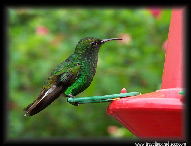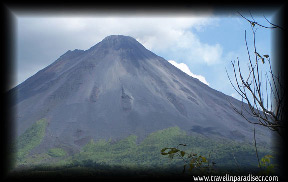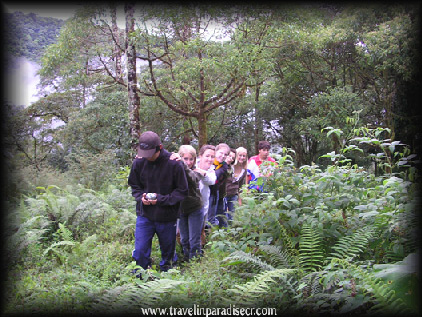|
 My
Costa Rica Ecotourism
Proud member of
Costa Rica
Travel In Paradise
Group Tours
See Costa Rica through the eyes of Costa Ricans
We Accept

|
Costa Rica Ecotourism
Ecotourism emphasizes a minimal impact on the environment. It provides income that helps to both preserve protected areas as well as benefit local populations, by reducing their dependence on activities possibly harmful to natural habitats.
Definition and Ecotourism PrinciplesTIES defines ecotourism as "responsible travel to natural areas that conserves the environment and improves the well-being of local people." This means that those who implement and participate in ecotourism activities should follow the following principles: * Minimize impact
* Build environmental and cultural awareness and respect
* Provide positive experiences for both visitors and hosts
* Provide direct financial benefits for conservation
* Provide financial benefits and empowerment for local people
* Raise sensitivity to host countries' political, environmental, and social climate
* Support international human rights and labor agreements
Fortunately, Costa Rica, the birthplace of ecotourism, is also the place where this activity has achieved the highest level of success. Costa Rica takes pride in the fact that every day tens of thousands of visitors experience the incredible variety of wildlife in this natural paradise. Costa Rica, a small country, measuring 51.100 square kilometers, is replete with breathtaking landscapes and a variety of natural wealth. This small stretch of land, representing barely 0.3% of the earth's total surface area, houses 5% of the global biodiversity. Costa Rica is home to more bird species than the United States, as well as to a greater variety of butterflies than in all of Africa. These facts demonstrate why this Central American nation of 4 million inhabitants has received such considerable international recognition in the area of biodiversity. is home to more bird species than the United States, as well as to a greater variety of butterflies than in all of Africa. These facts demonstrate why this Central American nation of 4 million inhabitants has received such considerable international recognition in the area of biodiversity.
Living in Costa Rica's diverse habitats and ecosystems are: 13 thousand plant species, 2,000 moth and 4,500 butterfly  species, 163 varieties of amphibians, 220 types of reptiles, 1,600 species of fresh and salt water fish, and at least 870 types of birds.The extensive landscape also boasts many different types of forests, including deciduous, mangrove swamps, rain forests, herbaceous ponds, cloud forests, moors, palm groves, oak woods, riparian forests, and swamp groves.Among Costa Rica's environmental wonders are extensive volcanoes, several of which are active and produce relaxing thermal springs, and are some of Costa Rica's most popular attractions. There are deep caves to explore and pre-Columbian settlements, sites of many meso-American archaeological studies. These are all part of a vast system of 22 national parks, 10 wildlife refuges, 12 biological reserves, 8 forest reserves and 26 protected zones, covering 25% of the national territory. species, 163 varieties of amphibians, 220 types of reptiles, 1,600 species of fresh and salt water fish, and at least 870 types of birds.The extensive landscape also boasts many different types of forests, including deciduous, mangrove swamps, rain forests, herbaceous ponds, cloud forests, moors, palm groves, oak woods, riparian forests, and swamp groves.Among Costa Rica's environmental wonders are extensive volcanoes, several of which are active and produce relaxing thermal springs, and are some of Costa Rica's most popular attractions. There are deep caves to explore and pre-Columbian settlements, sites of many meso-American archaeological studies. These are all part of a vast system of 22 national parks, 10 wildlife refuges, 12 biological reserves, 8 forest reserves and 26 protected zones, covering 25% of the national territory.
The Costa Rican Government, in an effort to preserve the natural riches of this country, is currently implementing sustainable development policies that foster the adequate use of natural resources Contact Us.
 |
|
Costa Rica Vacations Tours |
|





